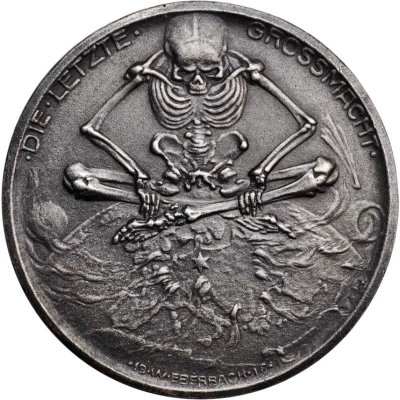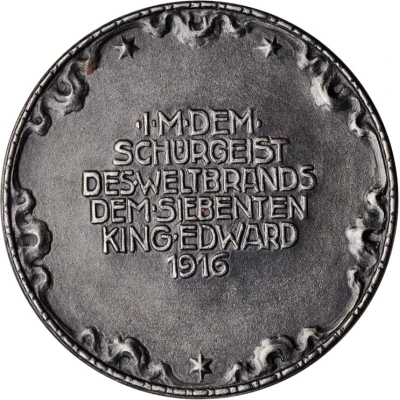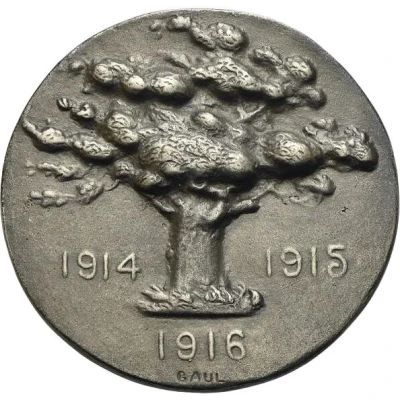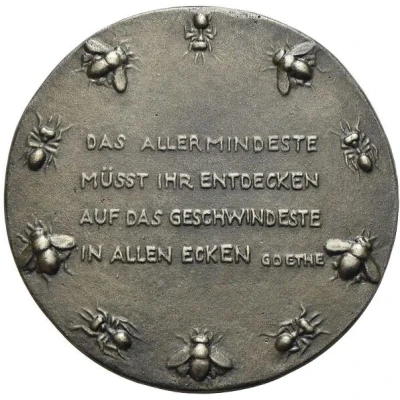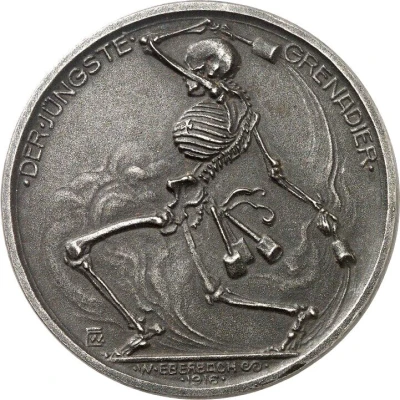Reverse
Six line inscription; all within decorative border of stars and crescents.
Script: Latin
Lettering: - I - M - DEM - / SCHÜRGEIST / DES - WELTBRANDS / DEM - SIEBENTEN / KING - EDWARD / 1916
Translation: to his Royal Highness, King Edward VII, inciter of world conflagration
Engraver: Walther Eberbach
Edge
Plain with inscription
Lettering: DS 115
Unabridged legend: Deutsche Schaumünze 115
Comment
Eberbach was inspired by the events of World War I to create a series of rather morbid medals to propagandize the German war effort. The theme upon which he decided to focus was the Totentanz, or "Dance of Death." This series of issues, a divergence from the ephemeral topic of vanitas, portrayed Death as a skeleton, quite gleefully taking joy in the demise of his enemies-the allied powers-rather than a subtle reflection upon life and death. This frank morbidity is expressed by Eberbach himself in a letter to Julius Menadier, in which he writes "...I want whoever holds the pieces in their hands years later to be overcome by the shudder grimness." It's safe to say that, in this desire, Eberbach was astoundingly successful.In this medal, Eberbach places the blame for the war at the feet of the former British king, Edward VII. Edward had a rather icy relationship with the German emperor, Wilhelm II-his nephew. Wilhelm's mother, Victoria, was a sister to Edward, and about the only British family member for whom Wilhelm had a positive view was his grandmother, Queen Victoria. Following the latter's death in 1901 and the accession of Edward, these familial ties became strained, worsening throughout the first decade of the 20th century. By the time of Edward's death in 1910, the gathering which took place would be one of the final among the royal houses of Europe, as many would be dead or deposed by the war's conclusion at the end of 1918.
